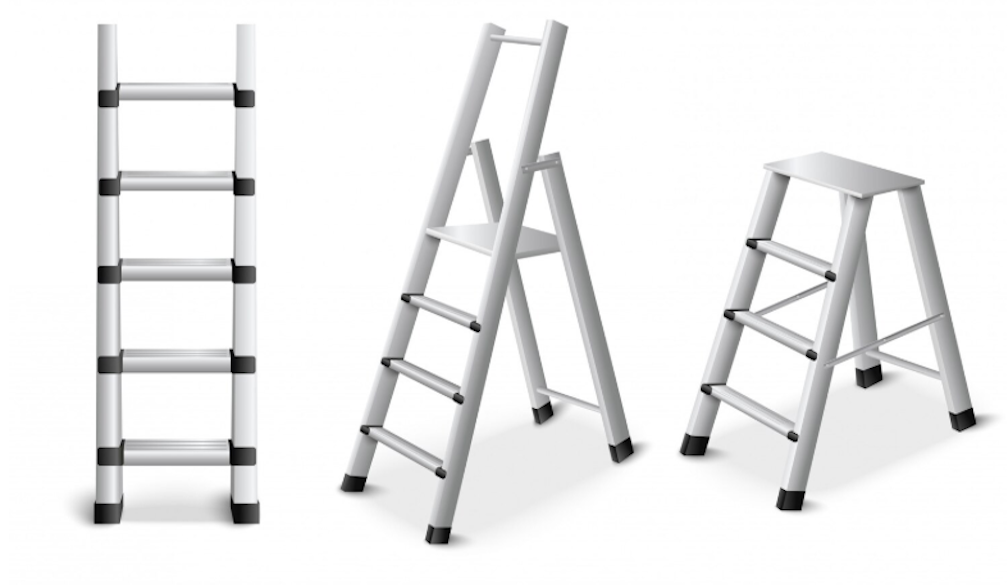Aluminium vs. Steel Ladders: Which One is Best for Your Needs?
 (Source)
(Source)Every homeowner who reaches the attic for cobwebs alongside professional tradespeople finds reliable ladders essential for their work. A comparison between aluminium ladders and steel ladders creates confusion about which option offers the most beneficial return for your particular requirements. Choice cannot determine this decision because each material exhibits unique traits that suit individual users and jobs. This breakdown explores the features to assist you in picking between ladders for safe and effective teaching.
Your ladder serves as your dependable tool for accomplishing activities safely. Ladders must combine strength with reliability and fit the requirements of the assigned duties. Using an improper ladder leads to performance losses, safety risks, and the potential for harm to oneself.
The basis of selecting an aluminium or steel ladder depends on comprehending their fundamental distinctions, ensuring usability and security.
The Lightweight Champion: Unpacking the Advantages of Aluminium Ladders
Many users have adopted aluminium ladders because of their advantageous traits. Aluminium ladders offer prime benefits through their portable design and convenience in usage.
- The primary advantage is mobility because aluminium ladders weigh significantly less than steel ones. The weight of aluminium exceeds steel so much that these ladders become efficiently transportable and portable even during frequent worksite or home needs. The less weight in the equipment means the user experiences reduced physical stress.
- The natural creation of an oxide covering on aluminium protects it against both rust and corrosion, making it a long-term winner. Aluminium ladders serve outdoor applications as well as damp locations because they resist rust formation, which preserves their structural stability.
- The strength ratio of aluminium alloys used for ladders becomes exceptional in terms of their lightweight construction. The material carries substantial weight without losing any manageability factor.
- The surface of aluminium remains free of marks and shows no signs of staining, making it suitable for delicate interior work.
Certain drawbacks exist when using aluminium materials.
- Lower Strength Than Steel (Generally): Compared to steel ladders, aluminium models maintain a superior strength-to-weight ratio, yet they are weaker under ultimate tensile stress conditions. Manufacturers should select other materials to tackle industrial tasks demanding substantial loads because aluminium does not reach optimal performance levels in those scenarios.
- Can Dent or Bend More Easily: The compromise with aluminium involves being less strong than steel since it tends to bend or dent under forceful impacts.
The Robust Workhorse: Exploring the Strengths of Steel Ladders
- Due to its naturally rigid properties, steel's strength and durability surpass those of aluminium. Steel ladders excel as industrial tools because they support heavy-weight loads and resist extreme usage conditions.
- Compared to aluminium products, Steel's natural strength makes it resistant to bending and protects the ladder from physical damage during heavy loads or unintentional impacts. The desired environment's demanding conditions will extend the lifespan of the material.
- During their initial purchase, the acquisition price of steel ladders was typically lower than the corresponding prices of equivalent-sized and rated aluminium models.
The two significant disadvantages of steel ladders are their heavy weight and their sensitivity to corrosion.
- Heavier and Less Portable: Steel ladders' weight is significant because it reduces the convenience of transportation, installation, and repositioning during tasks that demand regular movement. The weight of steel ladders also produces extra fatigue for users.
- Susceptible to Rust and Corrosion: Steel is prone to rust and corrosion unless specially treated with coatings or galvanisation, particularly in damp or outdoor environments. Rust can significantly weaken the ladder's structure over time, making it unsafe.
When Selecting Ladders, You Need to Consider These Important Factors
- Intended Use: Aluminium ladders are often the preferred choice for most family duties, DIY projects, and light-to-medium responsibility change work where portability is prime. Steel ladders are probably extra appropriate for heavy-obligation business programmes, construction websites, and responsibilities regarding very heavy masses.
- Weight and Portability: If you need to move the ladder frequently, mainly up and down stairs or throughout distinctive locations, the lighter weight of aluminium may be a massive gain.
- When planning for sustained outdoor use or exposure to damp environments, aluminium proves superior because it withstands corrosion better than other materials. In cases that demand maximal resistance to bending over extended use periods, steel will demonstrate a longer lifespan than aluminium.
- The long-term maintenance costs consist of replacing corrosion-related steel parts and damage-prone aluminium parts. Therefore, it is important to understand both material types for budget planning.
- Safety standards enforcement and weight rating consideration should be universal among ladder materials because the ladder must follow specifications (such as EN131) and surpass user weight with the allotted material weight.
The Verdict: Matching the Ladder to the Task
Every ladder application has its ideal material choice. The most suitable ladder between aluminium and steel depends entirely on the unique requirements of your situation as well as the working environment and intended task usage.
Homeowners and many tradespeople prefer aluminium ladders because they are lightweight yet portable and resistant to corrosion. Heavier industrial needs call for steel ladders, which provide outstanding strength and resistance to bending, even though they sacrifice portability options.
Give the highest priority to safety at all times. The ladder you use needs to be manufactured from a material that fulfils safety requirements while meeting the requirements of your work. Additionally, it should demonstrate reliable conditions. The combination of purpose evaluation and material examination enables you to select a ladder that provides effective, safe, and efficient access to your goals on each usage occasion.

















